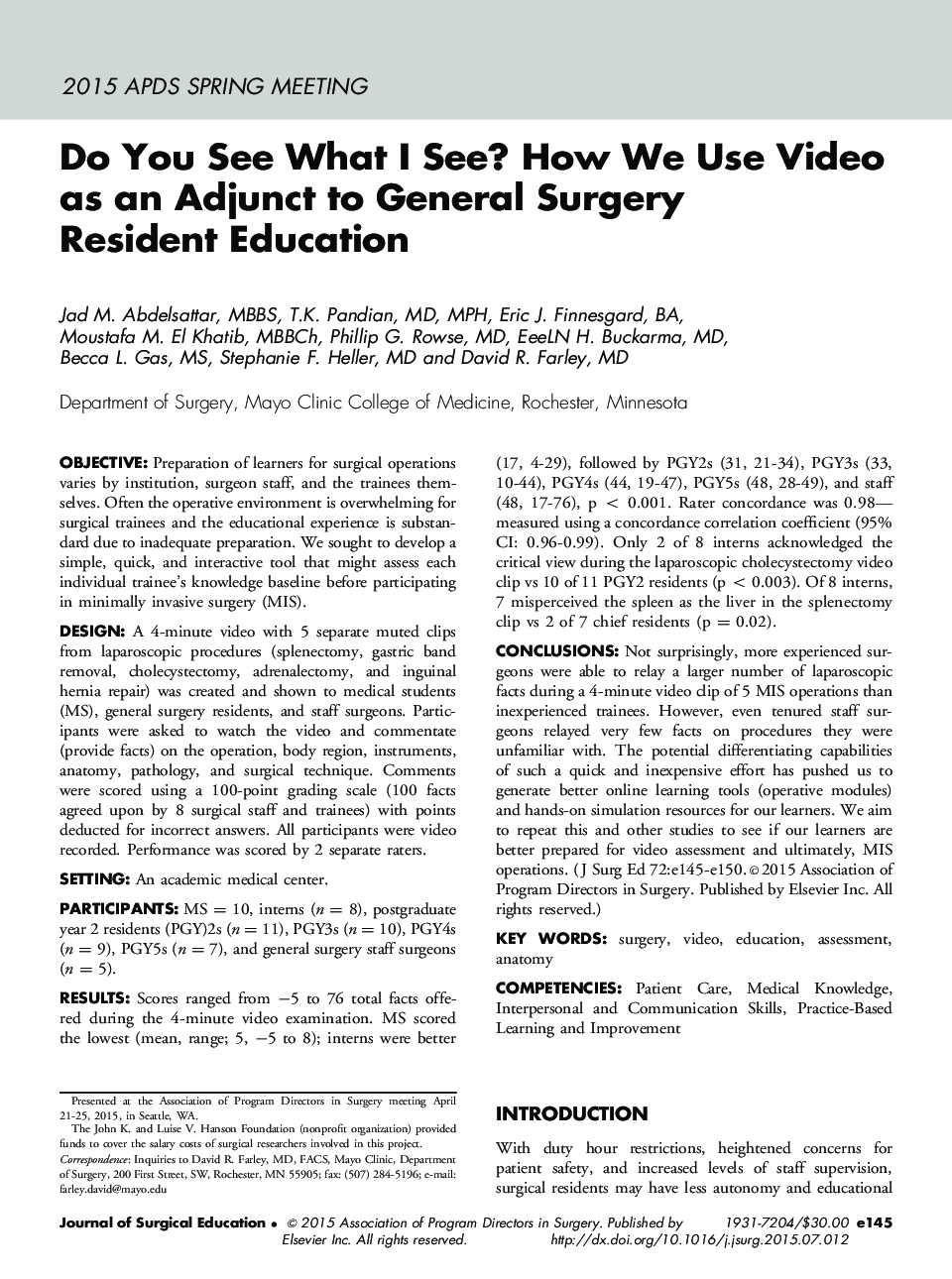| کد مقاله | کد نشریه | سال انتشار | مقاله انگلیسی | نسخه تمام متن |
|---|---|---|---|---|
| 4297450 | 1288322 | 2015 | 6 صفحه PDF | دانلود رایگان |
ObjectivePreparation of learners for surgical operations varies by institution, surgeon staff, and the trainees themselves. Often the operative environment is overwhelming for surgical trainees and the educational experience is substandard due to inadequate preparation. We sought to develop a simple, quick, and interactive tool that might assess each individual trainee’s knowledge baseline before participating in minimally invasive surgery (MIS).DesignA 4-minute video with 5 separate muted clips from laparoscopic procedures (splenectomy, gastric band removal, cholecystectomy, adrenalectomy, and inguinal hernia repair) was created and shown to medical students (MS), general surgery residents, and staff surgeons. Participants were asked to watch the video and commentate (provide facts) on the operation, body region, instruments, anatomy, pathology, and surgical technique. Comments were scored using a 100-point grading scale (100 facts agreed upon by 8 surgical staff and trainees) with points deducted for incorrect answers. All participants were video recorded. Performance was scored by 2 separate raters.SettingAn academic medical center.ParticipantsMS = 10, interns (n = 8), postgraduate year 2 residents (PGY)2s (n = 11), PGY3s (n = 10), PGY4s (n = 9), PGY5s (n = 7), and general surgery staff surgeons (n = 5).ResultsScores ranged from −5 to 76 total facts offered during the 4-minute video examination. MS scored the lowest (mean, range; 5, −5 to 8); interns were better (17, 4-29), followed by PGY2s (31, 21-34), PGY3s (33, 10-44), PGY4s (44, 19-47), PGY5s (48, 28-49), and staff (48, 17-76), p < 0.001. Rater concordance was 0.98—measured using a concordance correlation coefficient (95% CI: 0.96-0.99). Only 2 of 8 interns acknowledged the critical view during the laparoscopic cholecystectomy video clip vs 10 of 11 PGY2 residents (p < 0.003). Of 8 interns, 7 misperceived the spleen as the liver in the splenectomy clip vs 2 of 7 chief residents (p = 0.02).ConclusionsNot surprisingly, more experienced surgeons were able to relay a larger number of laparoscopic facts during a 4-minute video clip of 5 MIS operations than inexperienced trainees. However, even tenured staff surgeons relayed very few facts on procedures they were unfamiliar with. The potential differentiating capabilities of such a quick and inexpensive effort has pushed us to generate better online learning tools (operative modules) and hands-on simulation resources for our learners. We aim to repeat this and other studies to see if our learners are better prepared for video assessment and ultimately, MIS operations.
Journal: Journal of Surgical Education - Volume 72, Issue 6, November–December 2015, Pages e145–e150
